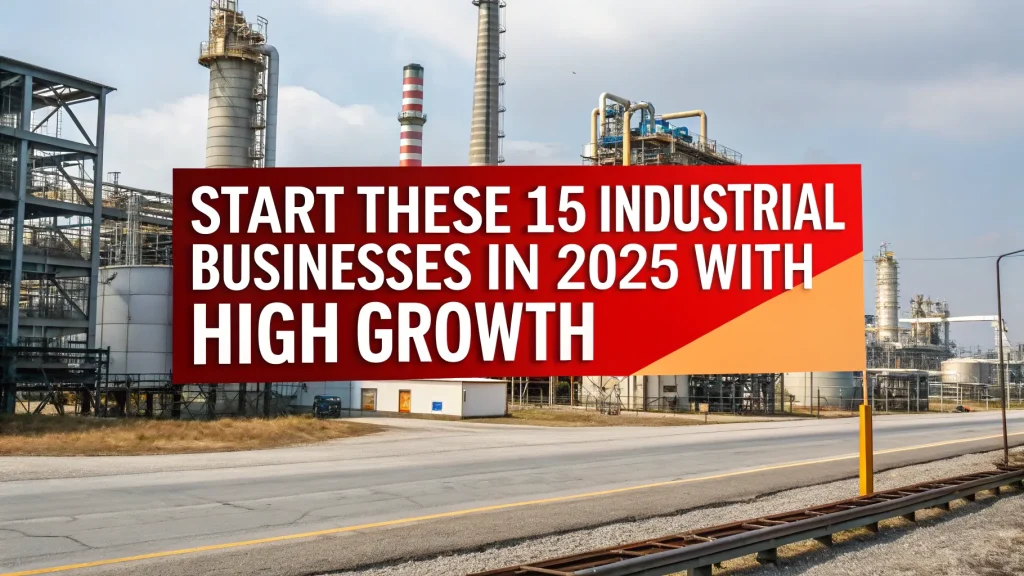Bauxite is the primary source of aluminum and is widely processed across the globe. However, bauxite processing generates substantial volumes of red mud, a hazardous waste rich in valuable compounds such as Fe3O2 (iron oxide) and TiO? (titanium dioxide). With increasing environmental concerns and the rising demand for critical minerals, the recovery of Fe3O2 and TiO2 from bauxite waste has emerged as a sustainable solution for both ecological and economic benefits.
Fe?O? & TiO? Extraction: A Game-Changer for Sustainable Industry
Red mud, the by-product of the Bayer process used in alumina extraction, is known for its complex composition. On average, red mud contains 30–60% Fe?O?, 2–10% TiO?, and smaller quantities of rare earth elements. These figures clearly indicate a lucrative opportunity for recovery technologies that convert this industrial waste into valuable resources.
Technological Pathways for Fe?O? Recovery
The extraction of Fe3O2 from bauxite waste has gained immense traction due to its utility in various industries including steel manufacturing, pigments, and magnetic materials.
- Hydrometallurgical Processing: This method employs acidic or alkaline leaching techniques. Iron is selectively leached and then precipitated using oxidizing agents. Sodium hydroxide and sulfuric acid are commonly used solvents in the process.
- Pyrometallurgical Recovery: In this technique, the red mud is heated at high temperatures in the presence of reducing agents like carbon or hydrogen to reduce iron oxides to metallic iron. The iron is then separated via magnetic separation.
- Magnetic Separation: Following pyrometallurgical treatments, magnetic separation is employed to extract iron-rich fractions from the residue. This method is cost-effective and produces high-grade iron concentrate.
Researchers can optimize these methods for different grades of red mud and achieve substantial efficiency in Fe?O? recovery.
TiO? Recovery: A High-Value Proposition
Titanium dioxide, commonly used in pigments, plastics, and sunscreens, is another critical mineral in red mud. Its recovery from bauxite waste involves more complex processes:
- Selective Leaching: Operators use organic acids and strong inorganic acids to dissolve non-titanium minerals, leaving behind a TiO?-rich residue. Subsequently, calcination helps to upgrade the concentrate.
- Chlorination Process: This high-temperature method treats red mud with chlorine gas in the presence of carbon to produce titanium tetrachloride, then re-oxidizes it to obtain pure TiO?.
- Alkaline Fusion: This process includes mixing red mud with sodium hydroxide and then subjecting it to high temperatures. Water or acids leach the fused mass to extract titanium compounds.
These advanced methods ensure that the recovery of Fe3O2 and TiO2 from bauxite waste meets commercial purity standards.
Environmental and Economic Implications
Recovering Fe?O? & TiO? from bauxite waste directly addresses the environmental challenges posed by red mud disposal. Conventionally stored in large ponds or landfills, red mud is alkaline and poses a severe threat to ecosystems. By processing this waste:
- Industries reduce the volume of hazardous waste.
- Authorities reclaim valuable land.
- Proper management practices minimize the risk of leachate contamination.
Economically, the recovered materials have high commercial value. Iron oxide sells widely for metallurgical applications, while TiO? has a growing market demand in paints, coatings, and photocatalysts. This dual recovery transforms waste management into a profit-generating industry.
Integration with Existing Alumina Plants
To improve efficiency, operators can co-locate recovery units with alumina refineries. Integration reduces logistical costs and enables real-time processing of red mud. This circular economy approach ensures effective utilization of every fraction of bauxite.
- Real-time processing eliminates storage costs
- On-site refining minimizes transportation emissions
- Synchronized operations improve ROI
Several Indian and Chinese companies are already adopting such integrated models, which has led to increased recovery rates and better compliance with environmental norms.
Case Studies and Pilot Projects
Numerous pilot projects across Europe and Asia have proven the viability of extracting Fe3O2 and TiO2 from bauxite waste.
- ALCORE Project (Australia): Successfully recovered TiO? and rare earth elements using acid-based techniques.
- REDMUD Project (Europe): Focused on integrated hydrometallurgical recovery of iron, alumina, and titanium from red mud.
- NITI Aayog India: Encouraged collaboration between CSIR and major mining industries for the recovery of valuable materials from red mud.
These case studies demonstrate scalable methodologies and highlight the importance of policy support in promoting such ventures.
Challenges and Future Prospects
Despite advancements, several challenges remain:
- High energy consumption in pyrometallurgical processes
- Complexity in separating multiple metals
- Wastewater management from leaching processes
- Economic feasibility for low-grade red mud
However, continuous innovations in nanofiltration, solvent extraction, and machine learning-based process optimization are enhancing recovery efficiencies. The global push towards resource efficiency and the circular economy further supports research and investment in this sector.
Applications of Recovered Fe3O2 and TiO2
The recovered materials are not mere industrial curiosities—they are pivotal components in several high-demand industries:
-
Fe?O?:
-
Steel industry (pig iron production)
-
Red pigments
-
Magnetic cores
-
Polishing agents
-
-
TiO?:
-
White pigments in paint and plastic
-
Sunscreen and cosmetics
-
Ceramic glazes
-
Photocatalytic coatings
-
As urbanization and consumer goods production increase, the demand for these materials continues to rise, reinforcing the value of recovery from bauxite waste.
Conclusion: A Path Forward
The recovery of Fe3O2 and TiO2 from bauxite waste is not merely a recycling initiative—it is a strategic imperative for sustainable industrial growth. With robust technological frameworks and increasing environmental regulations, industries must prioritize waste valorization. Leveraging advanced hydrometallurgical and pyrometallurgical methods, we can transform hazardous red mud into valuable commodities, promoting a greener, more profitable future.
Visit the page Select and Choose the Right Business Startup for You for sorting out the questions arising in your mind before starting any business and know which start-up you can plan.
We, at NPCS, endeavor to make business selection a simple and convenient step for any entrepreneur/startup. Our expert team, by capitalizing on its dexterity and decade’s long experience in the field, has created a list of profitable ventures for entrepreneurs who wish to diversify or venture. We regularly update the list to give you a steady dose of new and emerging opportunities.





